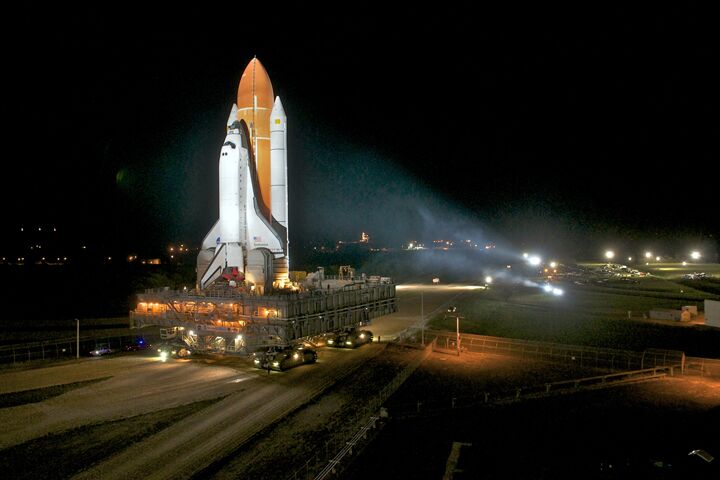
Countdown to Space Program Shutdown
“What happens when you have the right stuff at the wrong time?” asked the New York Times on the weekend. “Members of nasa’s astronaut corps have been asking just that, now that the space shuttle program is ending and their odds of flying anywhere good anytime soon are getting smaller.”
With the last two scheduled flights already full, morale is currently low at nasa, where astronauts are all dressed up with nowhere to go.
Space shuttle Endeavour is scheduled to launch for the last time on April 29, followed by Atlantis in June—currently set to be nasa’s final shuttle flight.
The Times continued,
Under President Obama, nasa’s human spaceflight program has been curtailed. The Ares i and Constellation programs, which were meant to succeed the space shuttles and take astronauts to the moon, were canceled, and nasa is instead hiring outside companies to devise alternatives. … Over the next few years, American astronauts will be competing for a handful of slots on the International Space Station, flying there on Russian Soyuz capsules.
Disheartened astronauts have begun leaving nasa; the number of active duty astronauts today has dwindled to 61 compared to about 150 in 2000 when nasa was preparing for International Space Station missions.
Some, like astronaut Garrett E. Reisman, have left nasa for the private sector, attempting to stay in the field of space exploration.
“Being an astronaut is the coolest job ever,” he said. “It was very, very difficult to voluntarily leave.”
“Morale is pretty low,” said Leroy Chiao, who left nasa to work for a company that will possibly offer space flights to tourists in the future. “This is a time of great uncertainty.”
This time last year, President Barack Obama gave a speech at the John F. Kennedy Space Center in Florida explaining the cancellation of the $108 billion nasa project Constellation, which was geared to send men to the moon by 2020 and to Mars by 2030.
The effects of the cancellation are far-reaching.
John M. Grunsfeld, the “Dr. Fix-It” for the Hubble Space Telescope, has now been told his chances of returning to space are “slim to none.” Since its launch in 1990, the Hubble Space Telescope has afforded many advances in the realm of space and science, on top of its awe-inspiring unprecedented images of deep space. Now its future—like nasa’s—remains uncertain.
In response to nasa’s new policies, Apollo astronauts Neil Armstrong, Jim Lovell and Gene Cernan last year wrote in an open letter to President Obama (emphasis ours):
For the United States, the leading space-faring nation for nearly half a century, to be without carriage to low Earth orbit and with no human exploration capability to go beyond Earth orbit for an indeterminate time into the future, destines our nation to become one of second- or even third-rate stature. …
Without the skill and experience that actual spacecraft operation provides, the usa is far too likely to be on a long downhill slide to mediocrity. America must decide if it wishes to remain a leader in space. If it does, we should institute a program which will give us the very best chance of achieving that goal.
“As for America’s space program, it is withering into obsolescence,” columnist Joel Hilliker wrote back in 2009. “The shift of influence from our visionary minority to its complacent majority precisely parallels America’s loss of national power.”
America’s diminished space program, once the pinnacle of mankind’s dreams to touch the stars, is now just another area in which the United States no longer comes out on top.
